ALERTCalifornia History
The ALERTCalifornia network is built on the shoulders of more than 20 years of UC San Diego research.
In 2001, Hans-Werner Braun at the San Diego Supercomputer Center and Frank Vernon, a seismologist with Scripps Institution of Oceanography, established UC San Diego’s High Performance Wireless Research and Education Network (HPWREN) with funding provided by the National Science Foundation. Though this first-generation network was originally created for geologic monitoring, it quickly became apparent that the network provided real-time wireless connectivity for fire stations and incident command posts, camps and air bases through a private wireless internet-connected cyberinfrastructure.
As the network developed, HPWREN installed high-resolution motion-detection cameras and sensors on San Diego’s Laguna Mountains and at the Ramona CAL FIRE Air Attack Base. Emergency managers were able to use those real-time wildfire images to communicate during the historic 2003 Cedar Fire suppression efforts.
Emergency managers incorporated HPWREN’s publicly available cameras and wireless network into their response strategies, and the infrastructure entered a period of rapid growth, and the technology continued to improve. HPWREN eventually expanded into the ALERTWildfire consortium of universities in Nevada, Oregon and Washington.
ALERTCalifornia is the third generation of UC San Diego’s wireless network. The now state-specific ALERTCalifornia program integrates and and expand on the earlier network. With support from the Office of the California Governor and funding from CAL FIRE and other sources, ALERTCalifornia more than doubled its number of camera sensors between 2019 and 2023.
In 2023, ALERTCalifornia, in partnership with CAL FIRE and industry partner Digital Path, created a novel AI system used to detect wildfires. The AI ushered in a new era of technology in wildfire prevention, detection, and response. This public-private partnership was recognized by TIME as one of the top innovations of 2023.
As a state-specific program, ALERTCalifornia is focused on California natural hazard monitoring and research efforts. California has more than 163,000 square miles of diverse terrain that requires adaptive management across government agencies and novel research. ALERTCalifornia is positioned to work with local, regional, state and federal government levels, utilities, and universities to meet state-specific needs and provide the data required to fill knowledge gaps and inform management decisions.
Learn more about the history of HPWREN and the network in: The History of HPWREN: A Retrospective from 2023 . You can also explore the different research tools and techniques used by ALERTCalifornia scientists on our Technology Page, and view the camera network live 24/7 on our public camera site.



